-
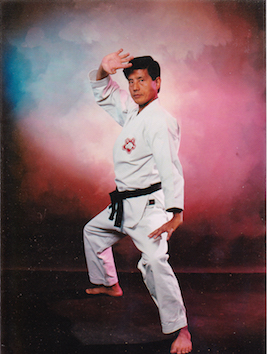
Okinawa Budo Kaisai
There exist numerous karate styles today such as Kyokushinkai karate, Shotokan karate, Shorei-Kan karate and so on. For the general public karate conjures up visions of hostile men breaking bricks and boards, or even necks, with bare hands. Others think of it as a sport. Shorei-Kan karate is different. It is a budo, which literally means the way to stop fighting in Japanese. Budo is an art to train the minds and bring a man to self-understanding and eventually enlightenment through practicing fighting techniques. Shorei-Kan karate is for the people who wish to learn self-defense techniques and to improve physical and mental conditions. As Tamano wished to distinguish it from the ordinary karate, he changed the name Shorei-Kan karate to Shorei-Kan Okinawa budo kaisai.
-
The history of Okinawa budo kaisai began in the late 19th century.
Master Kanryo Higaonna was an expert of te (the traditional Okinawan fighting art) and Chinese boxing. He learned a theory of kata from his Chinese master. He used it to make a new type of te called Nahate. He initiated the theory to his disciple Master Chojun Miyagi, who called it kaisai no genri. Kaisai signifies the work to find hidden techniques in kata and genri the principle. Kaisai no genri is the key to find secret techniques in kata.
Miyagi used the theory to improve Nahate. He designed a karate teaching method for the first time in the history of Okinawa Karate and invented teaching materials such as new kata, warm up exercises, supplementary exercise and so forth. He called his art Gojuryu karate. Unfortunately, he did not complete it because of his sudden death. Toguchi who learned the secret theory from Miyagi utilized it to finish his master’s project. He created many new kata including kata done to music, preset sparring exercises, supplementary exercises, etc. He made a karate teaching system with those materials called Shorei-Kan karate.
Toguchi initiated kaisai no genri to Tamano, who used it to create subjects such as a competitive sparring system called shiai kumite, several preset sparring systems and supplementary exercises. He added them in the program of Shorei-Kan karate. Hiagaonna, Miyagi and Toguchi strived to make their arts true budo of Okinawa by doing the work of kaisai. That is why Tamano believes it is proper to call the evolution form of their arts Okinawa budo kaisai.
-
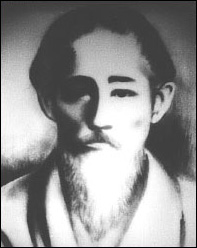
Kanryo Higaonna
Higaonna was born in 1853 in Naha.He studied te in Naha when he was a teenager. He went to China as a sailor, where he learned Chinese boxing for many years and returned to Okinawa. Upon returning to his home, he combined te and the Chinese boxing and created a new type of te. As it was very different from the traditional te, Shurite, the islanders called it Nahate. He died in 1915.
-
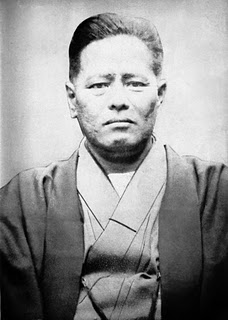
Chojun Miyagi
Miyagi was born in 1888. He joined Higaonna’s school when he was 14 years old and devoted his life to improve his teacher’s Nahate. Consequently, he created Gojuryu karate and strived to propagate it in Japan as well as abroad. He was the only karate master of Okinawa who had the vison on the future of karate and is considered a savior of Okinawa karate. He died in 1953.
-
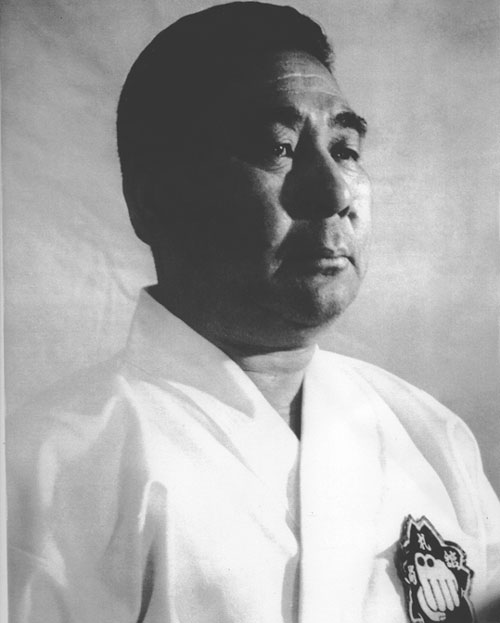
Sekichi Toguchi
Toguchi was born in 1917. He began studying Gojuryu karate at 16. He created a karate teaching system, Shorei-Kan karate, which his teacher Miyagi asked him to do before his demise. Toguchi went around the world to promote his karate teaching system. He wrote several books such as “Gojuryu karate” (Ohara publications, 1974), “Gojuryu karate II” (Ohara publications, 2001). He died in 1998.
-
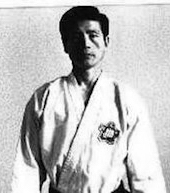
Toshio Tamano
Tamano was born in Tokyo in 1942. He joined Shorei-Kan karate dojo in 1960. After graduating a university in Tokyo, he left to New York in 1969 to propagate Shorei-Kan karate and Shoreikai Okinawa kobudo in the U.S.After he taught his arts in his Rockefeller center dojo for more than 10 years, he and his family moved to Milan, Italy in order to introduce his arts in Europe. They settled to France after five years in Milan. Tamano wrote several karate and kobudo books in Japanese, English, Italian, etc. He is currently conducting his organization Shorei-Kan Europe in France.